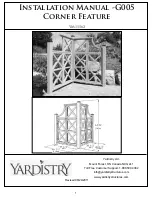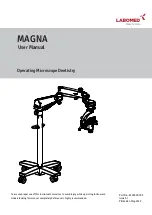
such equipment with a portable container rather
than from a fuel-dispenser nozzle.
•
Keep the nozzle in contact with the rim of the fuel
tank or container operating at all times until fueling
is complete.
Performing Daily
Maintenance
Perform the daily maintenance procedures; refer to
Daily Maintenance Checklist (page 29)
.
Checking the Engine-Oil
Level
Check the engine-oil level before each use or every
8 operating hours, refer to
.
Fuel Specifications
Fuel tank capacity:
2.0 L (0.59 US gallons)
Recommended fuel:
Unleaded gasoline with an
octane rating of 87 or higher ((R+M)/2 rating method)
Ethanol:
Gasoline with up to 10% ethanol (gasohol)
or 15% MTBE (methyl tertiary butyl ether) by volume
is acceptable. Ethanol and MTBE are not the same.
Gasoline with 15% ethanol (E15) by volume is not
approved for use.
•
Never use gasoline that contains more than
10% ethanol by volume
, such as E15 (contains
15% ethanol), E20 (contains 20% ethanol), or E85
(contains up to 85% ethanol).
•
Do not
use gasoline containing methanol.
•
Do not
store fuel either in the fuel tank or fuel
containers over the winter unless you use a fuel
stabilizer.
•
Do not
add oil to gasoline.
•
For best results, use only clean, fresh (less than
30 days old) fuel.
•
Using unapproved gasoline may cause
performance problems and/or engine damage,
which may not be covered under the warranty.
Filling the Fuel Tank
DANGER
In certain conditions, fuel is extremely
flammable and highly explosive. A fire or
explosion from fuel can burn you and others
and can damage property.
•
Fill the fuel tank outdoors, in an open area,
when the engine is cold. Wipe up any fuel
that spills.
•
Never fill the fuel tank inside an enclosed
trailer.
•
Do not fill the fuel tank completely full.
Add fuel to the fuel tank until the level is 6
to 13 mm (1/4 to 1/2 inch) below the bottom
of the filler neck. This empty space in the
tank allows fuel to expand.
•
Never smoke when handling fuel, and stay
away from an open flame or where fuel
fumes may be ignited by a spark.
•
Store fuel in an approved container and
keep it out of the reach of children. Never
buy more than a 30-day supply of fuel.
•
Do not operate without entire exhaust
system in place and in proper working
condition.
DANGER
In certain conditions during fueling, static
electricity can be released, causing a spark
which can ignite the fuel vapors. A fire or
explosion from fuel can burn you and others
and can damage property.
•
Always place fuel containers on the ground
away from your vehicle before filling.
•
Do not fill fuel containers inside a vehicle
or on a truck or trailer bed because interior
carpets or plastic truck-bed liners may
insulate the container and slow the loss of
any static charge.
•
When practical, remove equipment from
the truck or trailer and fuel it on the
ground. If this is not possible, then fuel
such equipment with a portable container
rather than from a fuel-dispenser nozzle.
•
If you must use a fuel-dispenser nozzle,
keep the nozzle in contact with the rim of
the fuel tank or container opening at all
times until fueling is complete.
17
















































